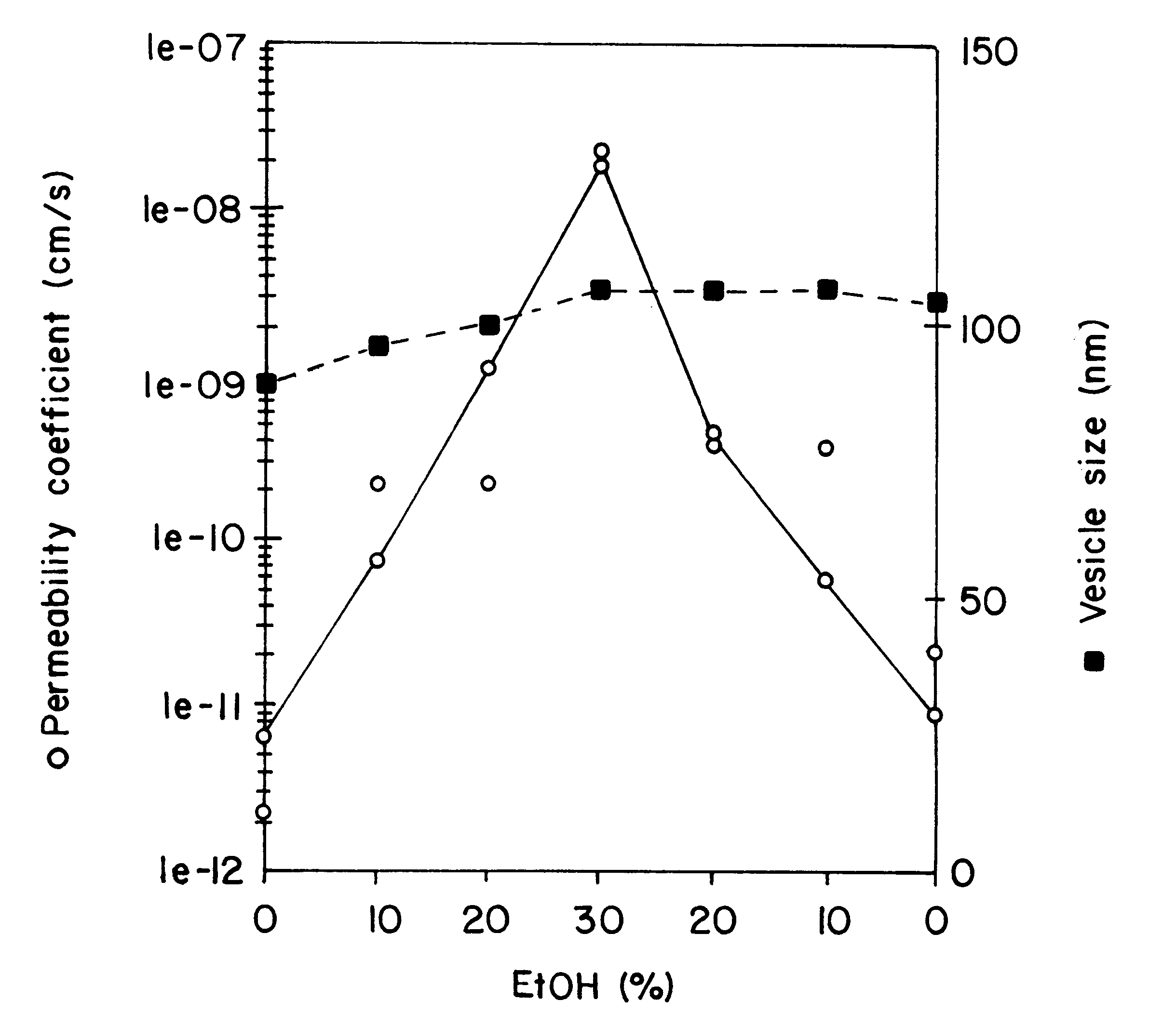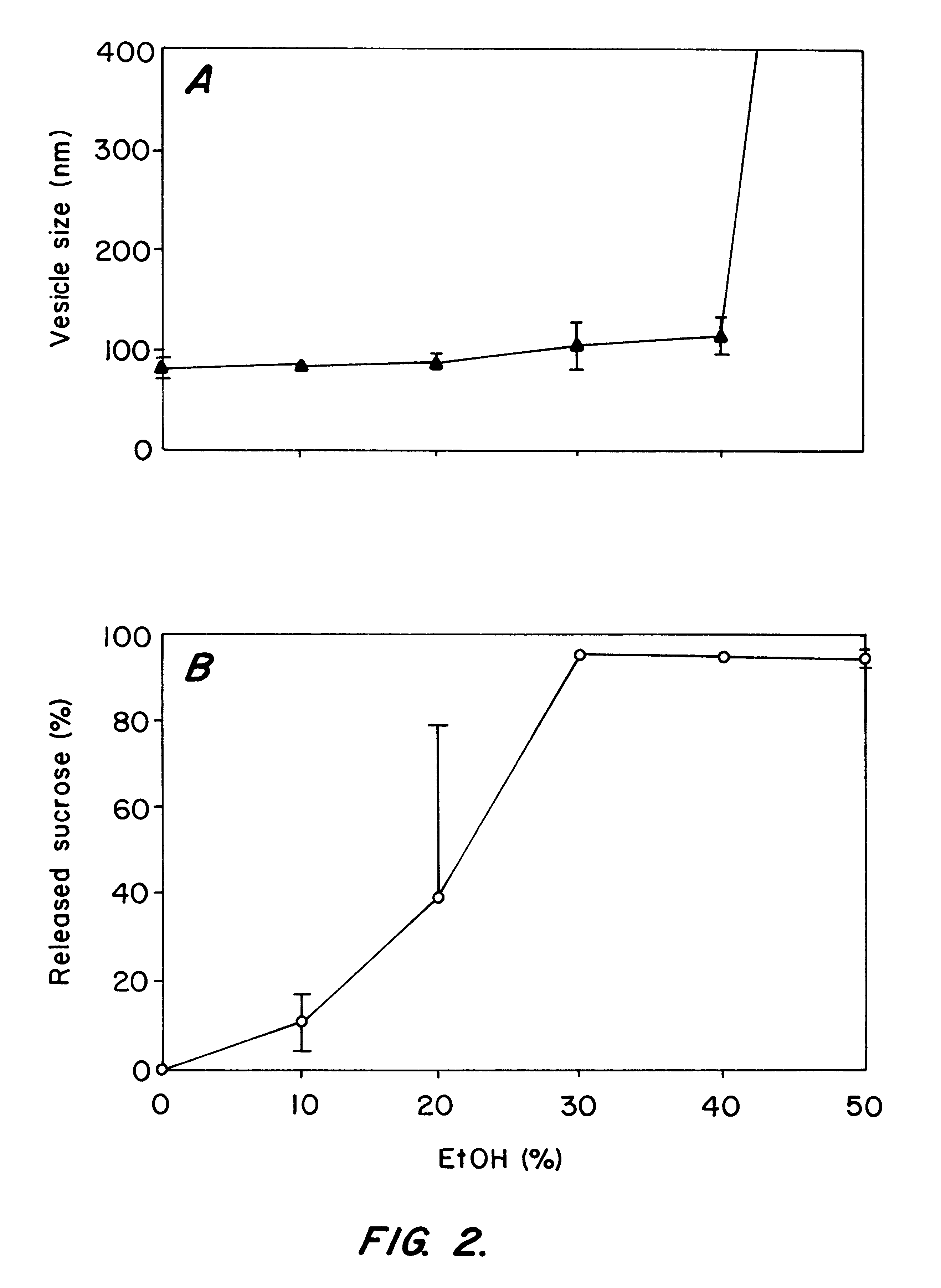Method of loading preformed liposomes using ethanol
a technology of preformed liposomes and ethanol, which is applied in the direction of diagnostic recording/measuring, ultrasonic/sonic/infrasonic diagnostics, and therapy, etc., can solve the problem of low efficiency of loading solutes (such as drugs), the process is not practical for loading solutes into preformed vesicles, and the effect of reducing the effective concentration of free solutes
- Summary
- Abstract
- Description
- Claims
- Application Information
AI Technical Summary
Benefits of technology
Problems solved by technology
Method used
Image
Examples
Embodiment Construction
Abbreviations
QELS--Quasielastic light scattering
MATERIALS AND METHODS
Lipids and Chemicals
Egg phosphatidylcholine (EPC) was obtained from Nichiyu Liposome (Tokyo, Japan). Dipalmitoylphosphatidylcholine (DPPC) was purchased from Avanti Polar Lipid (Birmingham, Ala.). [.sup.14 C]sucrose, [methoxy-.sup.3 H]inulin and [.sup.3 H]dextran were obtained from New England Nuclear (Mississauga, ON). All other chemicals were obtained from Sigma (St. Louis, Mo.) and were of analytical grade.
Vesicle Preparation
Lipid films were made by drying chloroform solutions of lipids under a stream of nitrogen followed by exposure to high vacuum for approximately 2 h. Large multilamellar vesicles (MLV) were prepared by hydrating (vortex mixing) the dry lipid film in 150 mM NaCl, 20 mM Hepes (pH 7.0). EPC and EPC / cholesterol (55:45 mol ratio) were hydrated at 50.degree. C. Lipid concentrations of 50 mg / H were routinely employed. The MLV were frozen in liquid nitrogen and thawed in warm water at the same temper...
PUM
 Login to View More
Login to View More Abstract
Description
Claims
Application Information
 Login to View More
Login to View More - R&D
- Intellectual Property
- Life Sciences
- Materials
- Tech Scout
- Unparalleled Data Quality
- Higher Quality Content
- 60% Fewer Hallucinations
Browse by: Latest US Patents, China's latest patents, Technical Efficacy Thesaurus, Application Domain, Technology Topic, Popular Technical Reports.
© 2025 PatSnap. All rights reserved.Legal|Privacy policy|Modern Slavery Act Transparency Statement|Sitemap|About US| Contact US: help@patsnap.com



